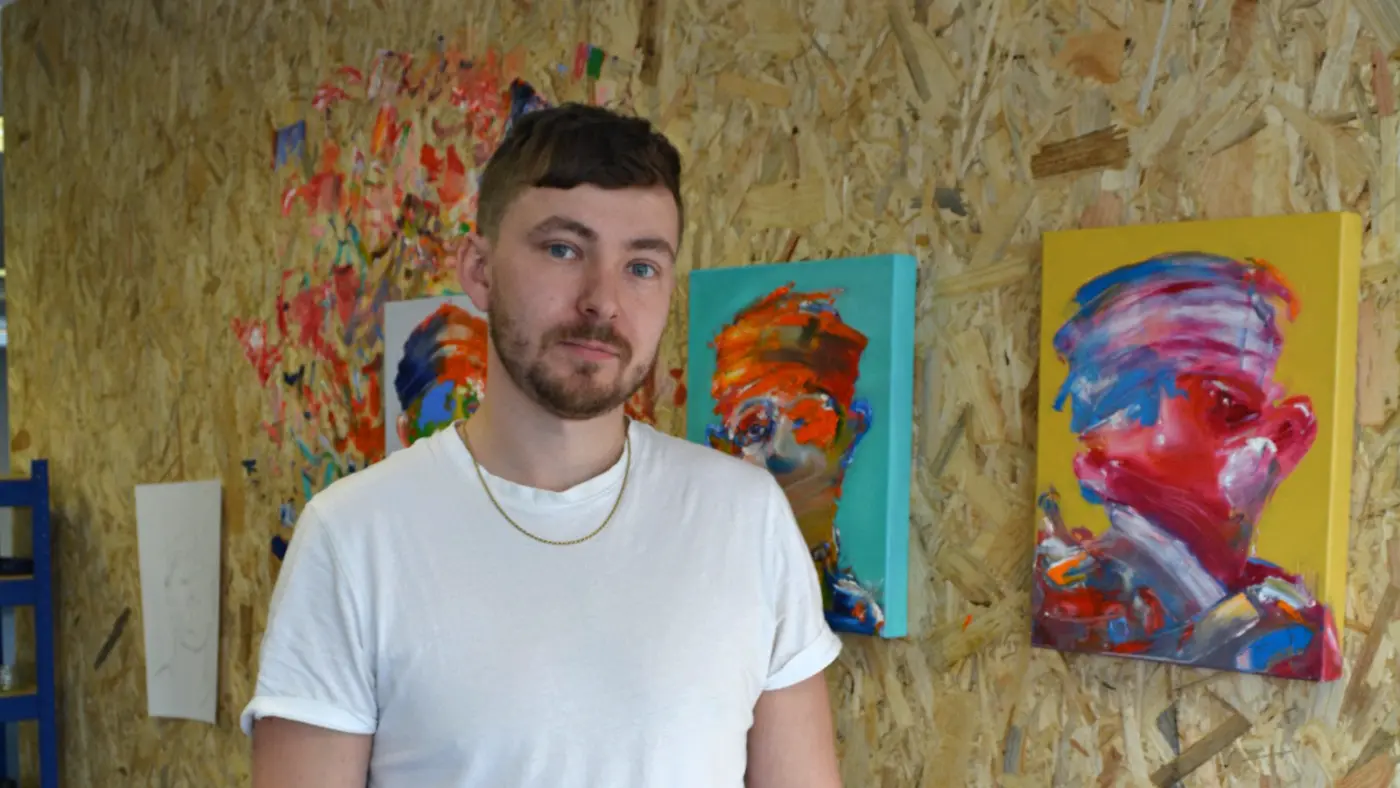By Zoë Goetzmann
Interview with Rory Watson Artist – Emerging Artist
Rory Watson is a London-based artist who works in a variety of different media: from painting, drawing, and charcoal, to digital installation projects.
He holds a Fine Art Foundation Degree with Distinction from City College of Brighton and Hove. Rory also holds a First-Class Honours Degree from Central Saint Martins, UAL.
In this interview, I visited Rory at his new studio located in Bethnal Green, London, where we spoke about a range of topics.
From what motivated his desire to become an artist, his painting process, working as a colourblind painter, his artistic influences, the pros and cons of digital and physical works and spaces as well as his future plans for his career and work: letting go creatively in order to grow as an artist capable of taking on a more multi-disciplinary approach:
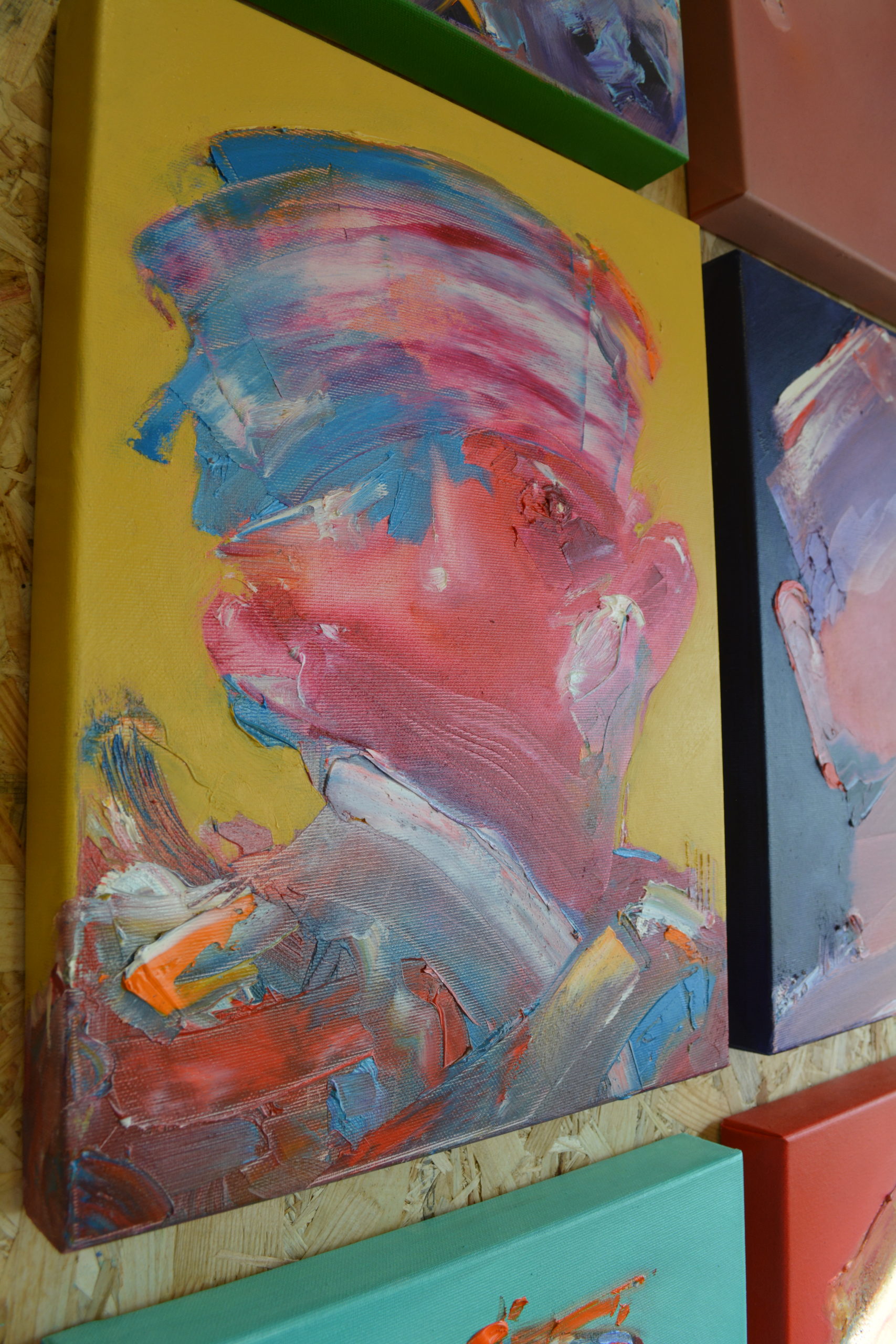
Zoë: So, let’s start out with question I like to ask all artists: What made you want to become an artist? In short: tell me your ‘Artist Story?’
Rory: That’s such a loaded question: what made you want to become an artist? Well, my mum’s an artist. She works with oil, she’s a painter. So, I suppose being bought up with a mum as an artist is definitely something which is inspiring.
During school, I had multiple backgrounds. I was kind of more pushed away, I suppose from Art and [due to a lot of factors] like being colourblind [for example]. I would get things wrong a lot.
I suppose I just wanted to do something which I could enjoy. I’m not very good at sitting still: [such as] being [or working] in an office. I like being active [and] moving around.
I suppose [it] [or art] is a challenge as well. [With Art] there’s never [a] [‘right answer.’] As soon as you try something, within a week, you look at a painting, that you liked last week, and suddenly you realize what you could have done better until you start another one [painting].
It’s just an endless process of trying to get to a point. You can never really let go.

Zoë: Did you so did you go to art school?
Rory: I did my Foundation Degree in Brighton. And then I took three years out in between going there and then going to Central Saint Martin’s. But I wasn’t a painter at University.
I used to do installations. I worked [with] a lot with like digital elements, like making holographic works, using Augmented Reality. I didn’t really start painting until after University.
Zoë: Tell me a bit about your current artistic and painting practice?
Rory: Rather than looking at the art world in so much depth, I’ve come to take more of a stance looking at myself within the art world and how I see myself as an artist and my own personal interests.
I’m still interested in physical spaces, digital spaces, and the modern art world that we live in. I’ve recently taken more of an internal viewpoint and been sort of looking at my own personal interests within the art world.
And I have been looking at [how] these ideologies will combine. I think it’s going be interesting.
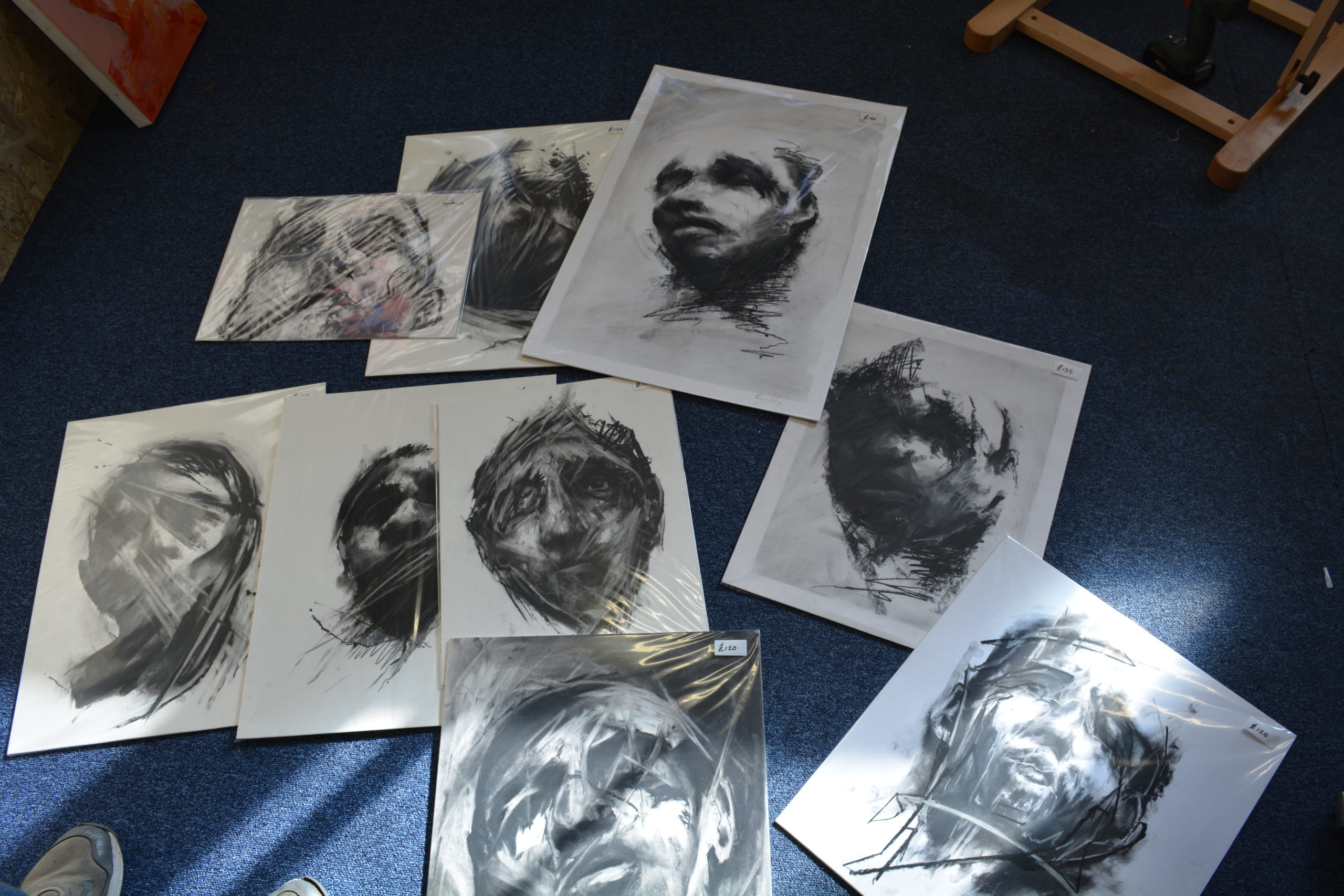
Zoë: Could you also talk to me a bit about what it’s like working as a painter with colourblindness?
Rory: It’s like being dyslexic with colours. Certain shades and certain colours can be confusing. Certain reds look like certain greens, certain blues look like certain lilacs.
Turquoise is probably the most confusing one. Because it could be grey, pink, green or blue. [But] a vivid bright green is always going to be seen as green.
I’ve been doing a bit more research [into] working with colour, through the process of [now] doing [very] colourful work. It’s interesting how a lot of people who are colourblind look at the textures of certain objects to help determine what colour they are.
That’s an element which I’ve started incorporating in my work, which is much more of a thick, textural element.

Zoë: That transitions into my next question: what do you love most about being an artist?
Rory: For me, it’s the constant challenge. As frustrating as it is: the amount of times, I’ve wanted to punch a hole in a canvas I’m working on, it’s the constant challenge.
You want to keep going because you can create a work and ‘one in 10,’ ‘one and 21’ [and/or] ‘[one] in 50 works,’ you create you [can] take a step back and you’re like, “Oh, I’m kind of happy with that.”
Give it a week you come back and then you’re like, “Well, why was I happy with that?” It keeps [up] the motivation to keep going. I feel like that’s what I love and hate about it. But, it’s exciting.
Zoë: Which artistic genre do you enjoy working with more? Digital or Painting?
Rory: I have this infatuation about the digital. It’s something I am interested in. It just takes me longer to get anywhere with it. I think that my work [painting] does discuss the digital somewhere another.
You could even say that the bold colours [juxtaposed] against each other, it [almost gives the feeling of [having] depth on [a two-dimensional] plane.
Zoë: That’s true. I didn’t notice that until now [gesturing to small canvas works on wooden studio wall behind me]. That makes a lot of sense. That brings us to the notion of imitating digital works as well – as the colours in the paintings are almost hyper-saturated.
Rory: Yes, it’s a very new way of working for me. It’s something which I’m sort of learning [as I go]. I suppose it’s not the way that I usually work.
But even this conversation has been revealing more about my practice I didn’t really know existed.
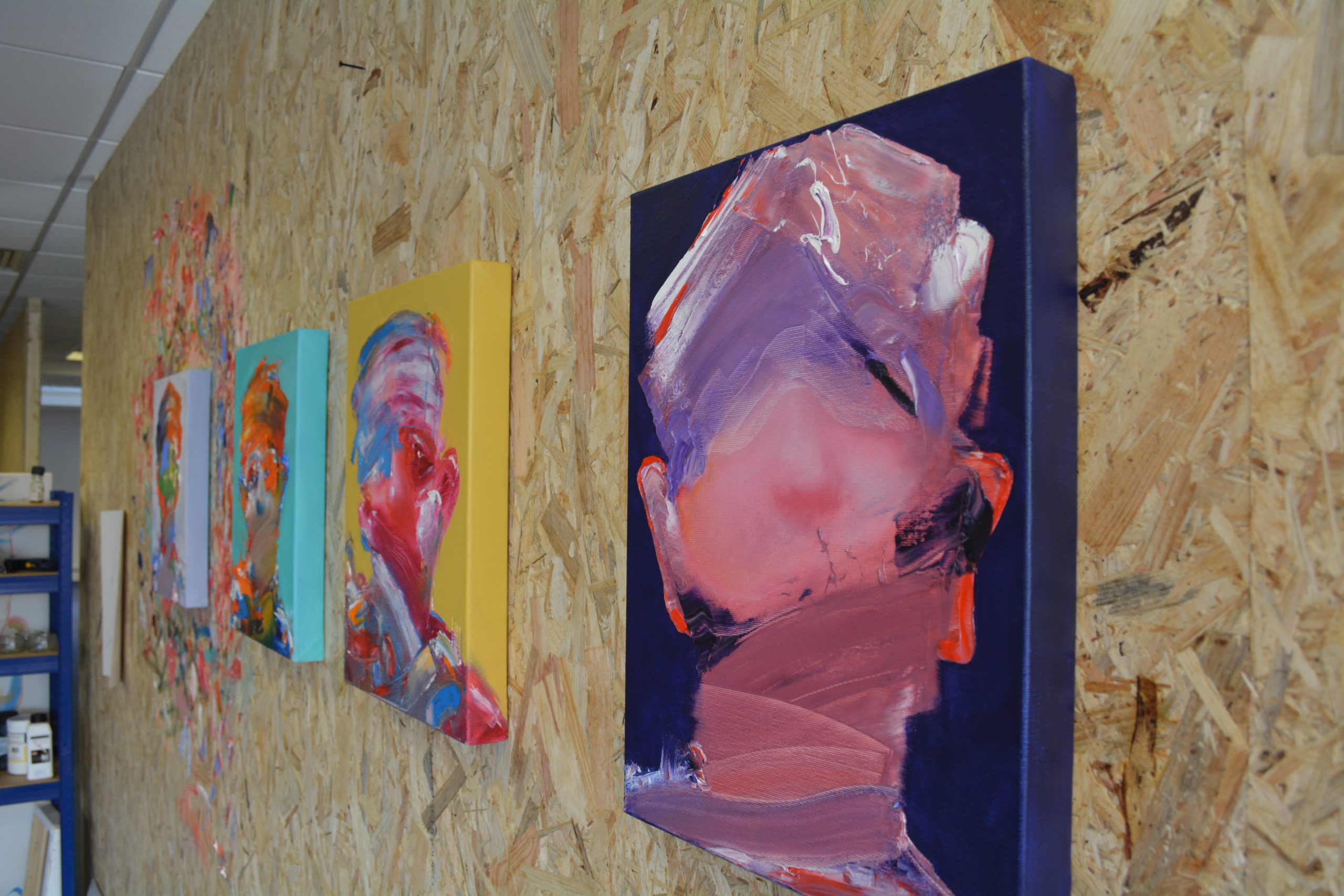
Zoë: Okay, so onto the bonus question: Is there something that you wish people knew about what’s it is like working as artists being an artist?
Rory: When I said that finished University, I always wanted to paint, but I didn’t want to be labeled a painter. I wanted to be able to work across different mediums.
I didn’t want to be typecast into this category and then be stuck in that category. I like working with different mediums and [following] [wherever] the process sort of takes you through.
I work very differently than to how I am [working] now. I sort of had plans where I wanted to go. I planned everything, thoroughly designed everything. Now I’m kind of letting things go and just rolling with it a little bit more, which has been difficult for me.
Because I [used to] think I [needed] a plan when it comes to my practice. By trying to get rid of [that] plan, at times, it’s been very difficult. And very frustrating.
You [often] hit like a block, you don’t really know what you’re doing, where are you going. And you need conversations like these [to] realize what it is [that is] sort of holding you back. I used to map things out, print out many pictures, at work from different things.
All these paintings that you look at behind you [The artist points to intensely colourful, small oil works on canvas behind us] none of them are done with models, none of them through photographs.
This [process] is all [done by] sort of approaching canvas with just the element of paint and a canvas. I used to [create] grids to make sure things [were] in proportion. But I kind of like it when things sort of ‘move ’in the painting.
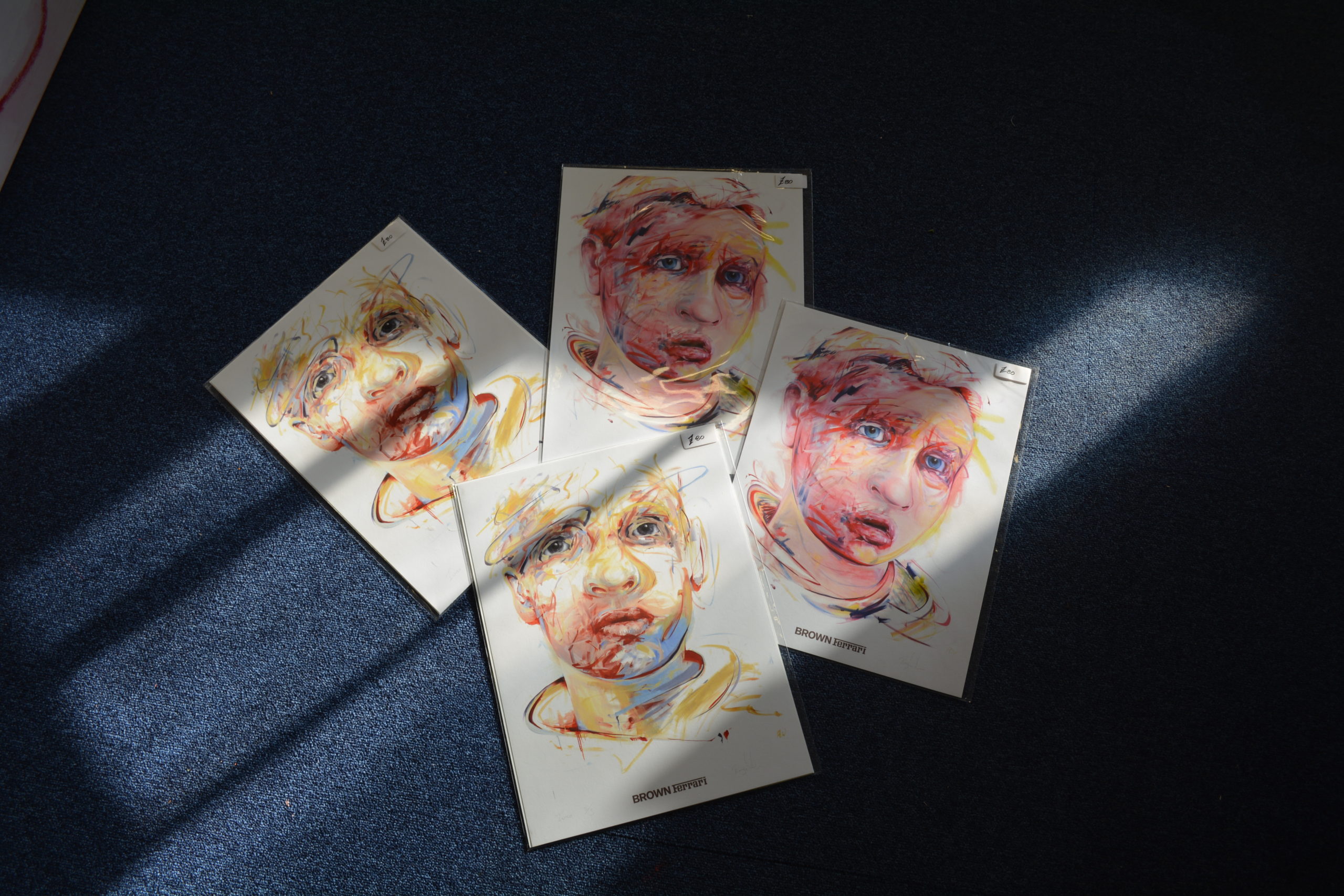
Zoë: Because that’s the tradition of painting and what artists are taught in art school … you’re taught the basic as a framework and as you begin to mature in your artistic practice, you can deviate from this foundation slightly.
Rory: A lot of people look at these paintings, they ask if they’re self-portraits. And it’s kind of interesting.
So, I suppose in some respects, they might be. I took photos of my face in the process just to see where shadows would hit the face at certain times. In terms of being more self-portrait [depends on] the colours that I’m choosing to use, or how I’m feeling in the studio on those days.
Sometimes I’ll be flicking paint of canvas and a little bit more aggressively: smudging, moving the paint around. So, I suppose a part of it is my emotions coming through in the paintings.
Other days where I’m a little bit more relaxed, there’ll be more intricate parts of the painting that will come out.
Zoë: Did you or do you have any artistic influences?
Rory: There’s been many, many influences through the years. I really love quite a few. Since painting at different times, there’s been different influences that have been more prominent [than others]. [Scale-wise], with works such as ‘The Stare’ and ‘Intro,’ [I took inspiration from] Jenny Saville.
Anthony McAuliffe is another artist who I was looking at as well [for his use of] [textural] works. I used to do a lot of charcoal drawings, like loads and loads of charcoal drawings.
And trying to transcribe charcoal to paint, I thought was quite interesting [the] way that Anthony McAuliffe accomplished that – keeping [a sense of] rawness [in]both mediums
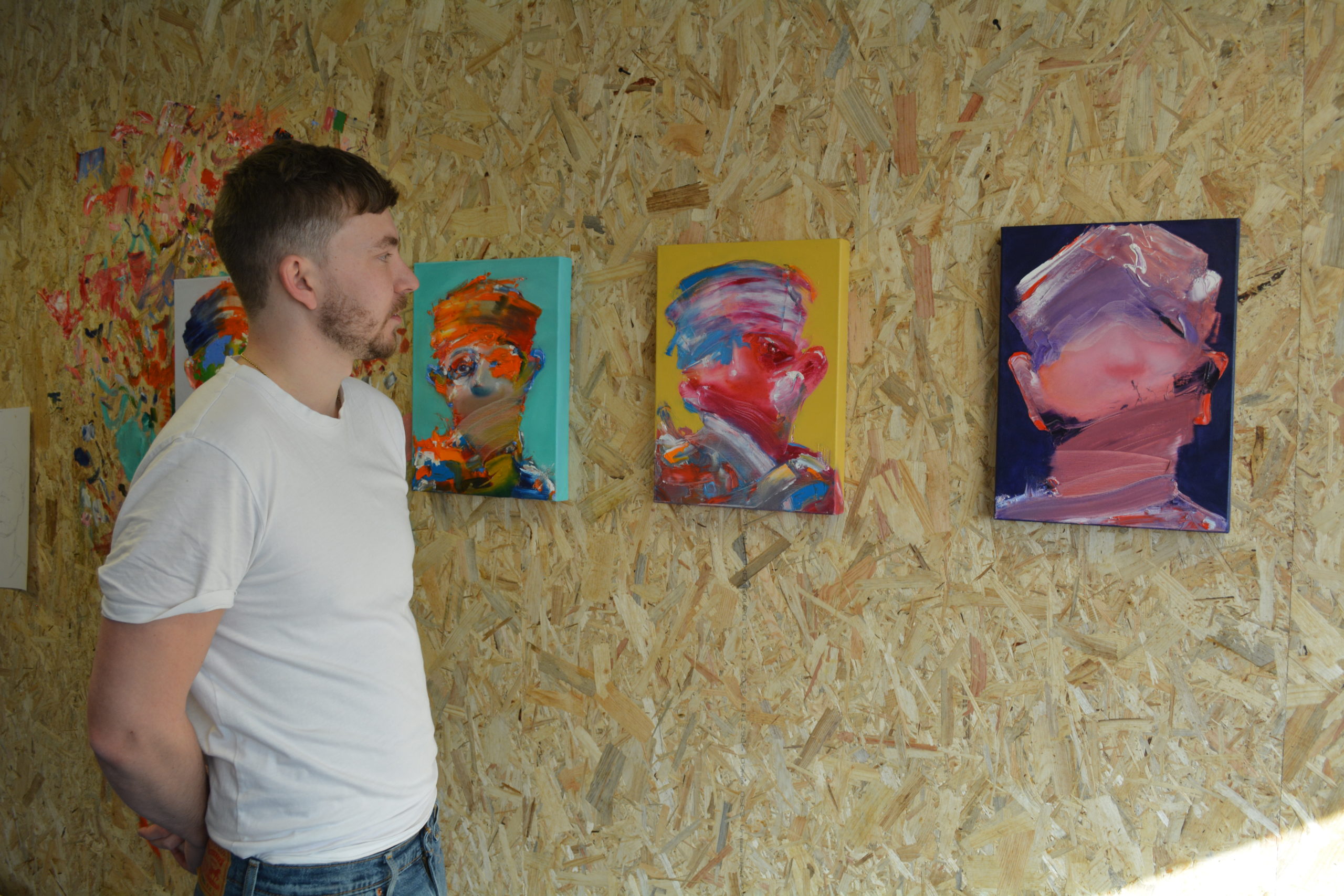
Zoë: For the last question, what do you wish you knew at the start of your career that you wish you knew now?
Rory: So, I think I stayed in almost like a safe zone for too long. I didn’t take as many risks as I wanted to.
Especially throughout University. I sort of got myself down ‘this rabbit hole’ of working with digital and comparing digital and physical spaces using holographic and digital elements. It wasn’t until after University where I started painting, started drawing and trying to talk about [these] subjects in different ways.
I was always kind of scared of painting. Maybe it has got something to do with the fact my mum was a painter, and I didn’t want to be compared. Maybe not like working with colour. Another one. I only ever worked black and white. I tried charcoal drawings.
I’ve never worked with colour. Because whenever I tried to recreate something, people would be [say]. “Why is their skin green?” and I didn’t even realize. So now I’m looking [at] how colours interact on the canvas. [I’m looking at how you can] build a face all together.
I wish I had the confidence to do that earlier. Because that took me too long to get the courage to do: almost for the fear of ‘being wrong.’
Zoë: Business-wise: is there any advice you would give yourself?
Rory: For me: it’s trying to stay clear of painting what other people want and doing what you want. And I think that’s the main thing because it’s quite easy.
You could have someone come up to you and say they really liked one piece of work and they could ask you to recreate it. But the whole point, especially if I think most artists practices are like, “Is that you?” You don’t sort of stagnate in that sense.
You move on you, keep going you evolve, and my work has changed a lot throughout the years. And sometimes some works I do, a lot of people say, “They’re grotesque,” “They’re haunting,” “They’re scary,” “They wouldn’t want it on their walls.” I get that quite a lot.
I suppose it’s not looking at sales as the main thing you want to look at. I want to look at creating work that I enjoy looking at.
You can find more of Rory’s work on Instagram at: @rorywatson.art


